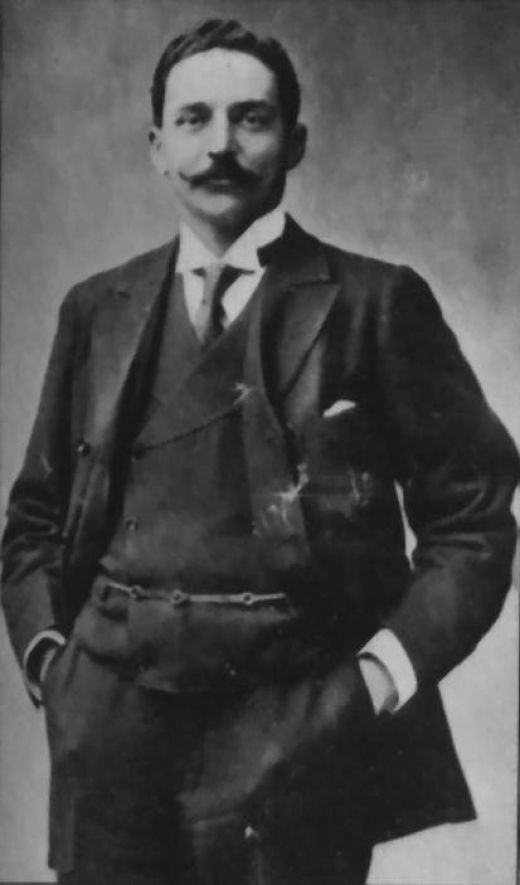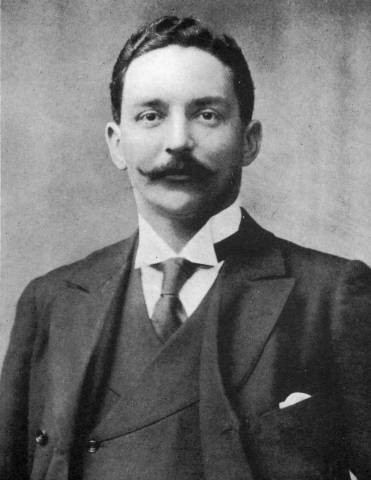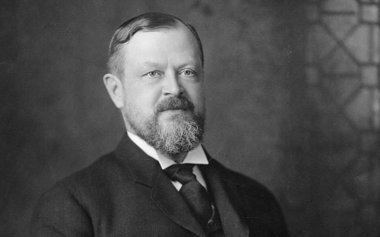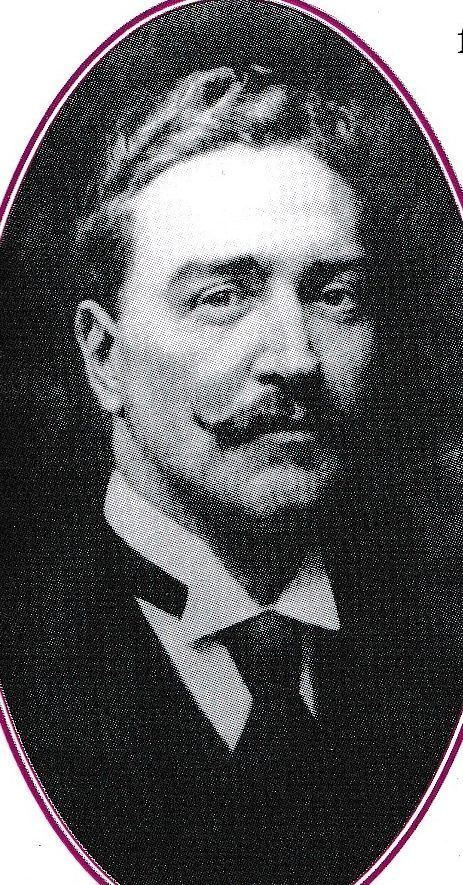Full Name Joseph Ismay Role Businessman Cause of death Stroke Parents Thomas Henry Ismay | Title Seaman Name J. Ismay Grandparents Thomas Ismay | |
 | ||
Other names Bruce IsmayJ. Bruce Ismay Children Margaret Bruce IsmayHenry Bruce IsmayThomas Bruce IsmayEvelyn Constance IsmayGeorge Bruce Ismay Spouse Julia Schieffelin (m. 1888–1937) Similar People Edward Smith, Thomas Andrews, Thomas Henry Ismay, Charles Lightoller, William McMaster Murdoch | ||
2011 titanic the musical biography j bruce ismay
Joseph Bruce Ismay (; 12 December 1862 – 17 October 1937) was an English businessman who served as chairman and managing director of the White Star Line. In 1912 he came to international attention as the highest-ranking White Star official to survive the sinking of the company's brand new flagship RMS Titanic, for which he was subject to severe criticism.
Contents
- 2011 titanic the musical biography j bruce ismay
- How to survive the titanic or the sinking of j bruce ismay by frances wilson book trailer
- Early life
- Chairman of White Star Line
- RMS Titanic
- Criticism
- Titanic controversy
- Later life
- Death
- Portrayals
- References

How to survive the titanic or the sinking of j bruce ismay by frances wilson book trailer
Early life

Ismay was born in Crosby, Lancashire. He was the son of Thomas Henry Ismay (7 January 1837 – 23 November 1899) and Margaret Bruce (13 April 1837 – 9 April 1907), daughter of ship-owner Luke Bruce. Thomas Ismay was the senior partner in Ismay, Imrie and Company and the founder of the White Star Line. The younger Ismay was educated at Elstree School and Harrow, then tutored in France for a year. He was apprenticed at his father's office for four years, after which he toured the world. He then went to New York City as the company representative, eventually rising to the rank of agent. Bruce was one of the founding team of Liverpool Ramblers football club in 1882.

On 4 December 1888, Ismay married Julia Florence Schieffelin (5 March 1867 – 31 December 1963), daughter of George Richard Schieffelin and Julia Matilda Delaplaine of New York, with whom he had five children:


In 1891, Ismay returned with his family to the United Kingdom and became a partner in his father's firm, Ismay, Imrie and Company. In 1899, Thomas Ismay died, and Bruce Ismay became head of the family business. Ismay had a head for business, and the White Star Line flourished under his leadership. In addition to running his ship business, Ismay also served as a director of several other companies. In 1901, he was approached by Americans who wished to build an international shipping conglomerate, which agreed to merge his firm into the International Mercantile Marine Company.
Chairman of White Star Line
After the death of his father on 23 November 1899, Bruce Ismay succeeded him as the chairman of White Star Line. He decided to build four ocean liners to surpass the RMS Oceanic built by his father: the ships were dubbed the Big Four: RMS Celtic, RMS Cedric, RMS Baltic, and RMS Adriatic. These vessels were designed more for size and luxury than for speed.
In 1902, Ismay negotiated the sale of the White Star Line to J.P. Morgan & Co., which was organising the formation of International Mercantile Marine Company, an Atlantic shipping combine which absorbed several major American and British lines. IMM was a holding company that controlled subsidiary operating corporations. Morgan hoped to dominate transatlantic shipping through interlocking directorates and contractual arrangements with the railroads, but that proved impossible because of the unscheduled nature of sea transport, American antitrust legislation, and an agreement with the British government. White Star Lines became one of the IMM operating companies and, in February 1904, Ismay became president of the IMM, with the support of Morgan.
RMS Titanic
In 1907, Ismay met Lord Pirrie of the Harland & Wolff shipyard to discuss White Star's answer to the RMS Lusitania and the RMS Mauretania, the recently unveiled marvels of their chief competitor, Cunard Line. Ismay's new type of ship would not be as fast as their competitors, but it would have huge steerage capacity and luxury unparalleled in the history of ocean-going steamships. The latter feature was largely meant to attract the wealthy and the prosperous middle class. Three ships of the Olympic Class were planned and built. They were in order RMS Olympic, RMS Titanic and RMS - later HMHS Britannic. In a highly controversial move, during construction of the first two Olympic class liners, Ismay authorized the projected number of lifeboats reduced from 48 to 16, the latter being the minimum allowed by the Board of Trade, based on the RMS Olympic's tonnage.
Ismay occasionally accompanied his ships on their maiden voyages, and this was the case with the Titanic. During the voyage, Ismay talked with either (or possibly both) chief engineer Joseph Bell or Captain Edward J. Smith about a possible test of speed if time permitted. After the ship collided with an iceberg 400 miles south of the Grand Banks of Newfoundland on the night of 14 April 1912, Ismay bore the full brunt of his errors in the ship's lifeboat capacity when it was made clear the ship would founder before any rescue ships would reach the area. Ismay stepped aboard Collapsible C, which was launched less than 20 minutes before the ship went down. He later testified that as the ship was in her final moments, he turned away, unable to watch his creation sink beneath the waters of the North Atlantic. Collapsible C was picked up by the Carpathia about 3–4 hours later.
After being picked up by the Carpathia, Ismay was led to the cabin belonging to the ship's doctor, Frank Mcgee. He gave Captain Rostron a message to send to White Star's New York office: "Deeply regret advise you Titanic sank this morning fifteenth after collision iceberg, resulting serious loss life further particulars later. Bruce Ismay". Ismay did not leave Dr. Mcgee's cabin for the entire journey, ate nothing solid, and was kept under the influence of opiates. Another survivor, 17-year-old Jack Thayer visited Ismay to try to console him, despite having just lost his father in the sinking.
[Ismay] was staring straight ahead, shaking like a leaf. Even when I spoke to him, he paid absolutely no attention. I have never seen a man so completely wrecked. — Jack Thayer, First Class passenger on Titanic
When he arrived in New York, Ismay was hosted by Philip Franklin, vice president of the company. He also received a summons to appear before a Senate committee headed by Republican Senator William Alden Smith. Ismay later testified at the Titanic disaster inquiry hearings held by both the U.S. Senate (chaired by Senator William Alden Smith) the following day, and the British Board of Trade (chaired by Lord Mersey) a few weeks later.
Criticism
After the disaster, Ismay was savaged by both the American and the British press for deserting the ship while women and children were still on board. Some papers called him the "Coward of the Titanic" or "J. Brute Ismay" and suggested that the White Star flag be changed to a yellow liver. Some ran negative cartoons depicting him deserting the ship. The writer Ben Hecht, then a young newspaperman in Chicago, wrote a scathing poem contrasting the actions of Capt. Smith and Ismay. The final verse reads: "To hold your place in the ghastly face of death on the sea at night is a seaman's job, but to flee with the mob, is an owner's noble right."
Some maintain Ismay followed the "women and children first" principle, having assisted many women and children himself. Ismay's actions were defended in the official British inquiry, which found "Mr. Ismay, after rendering assistance to many passengers, found "C" collapsible, the last boat on the starboard side, actually being lowered. No other people were there at the time. There was room for him and he jumped in. Had he not jumped in he would merely have added one more life, namely, his own, to the number of those lost."
Ismay had boarded Collapsible C with first-class passenger William Carter; both said they did so after there were no more women and children near that particular lifeboat. Carter's own behaviour and reliability, however, were criticised by Mrs. Lucile Carter, who sued him for divorce in 1914; she testified Carter had left her and their children to fend for themselves after the crash and accused him of "cruel and barbarous treatment and indignities to the person." London society ostracised Ismay and labelled him a coward. On 30 June 1913, Ismay resigned as president of International Mercantile Marine and chairman of the White Star Line, to be succeeded by Harold Sanderson.
Ismay announced during the United States Inquiry that all the vessels of the International Mercantile Marine Company would be equipped with lifeboats in sufficient numbers for all passengers. Following the inquiry, Ismay and the surviving officers of the ship returned to England aboard RMS Adriatic.
Titanic controversy
During the congressional investigations, some passengers testified that during the voyage they heard Ismay pressuring Captain Edward J. Smith to go faster, in order to arrive in New York ahead of schedule and generate some free press about the new liner. The book The White Star Line: An Illustrated History (2000) by Paul Louden-Brown states that this was unlikely, and that Ismay's record does not support the notion that he had any motive to do so.
Writing on the BBC News magazine website, Rosie Waites reports that Ismay was widely vilified in America after the sinking of the Titanic, due to the hostility of the press controlled by William Randolph Hearst, who had fallen out with Ismay. Waites writes "Ismay was almost universally condemned in America, where the Hearst syndicated press ran a vitriolic campaign against him, labelling him 'J. Brute Ismay'. It published lists of all those who died but in the column of those saved it had just one name - Ismay's."
Following from the Hearst press depiction of Ismay, Waites writes that every subsequent film about the Titanic has depicted Ismay as a villain including the Nazi Titanic film; A Night To Remember; James Cameron's Titanic; and Julian Fellowes' TV miniseries Titanic. Louden-Brown, consultant to the Cameron film, has stated that he thought this characterisation of Ismay was unfair and he tried to challenge this. Louden-Brown said "Apart from being told, under no circumstances are we prepared to adjust the script, one thing they also said is 'this is what the public expect to see'."
Lord Mersey, who led the 1912 British inquiry into the sinking of the Titanic, concluded that Ismay had helped many other passengers before finding a place for himself on the last lifeboat to leave the starboard side.
Later life
Ismay's reputation never recovered, and he kept a low profile following the Titanic disaster. He lived part of the year in a large cottage, Costelloe Lodge, near Casla in Connemara, Ireland. Paul Louden-Brown, in his history of the White Star Line, writes that Ismay continued to be active in business, and that much of his work was for The Liverpool & London Steamship Protection & Indemnity Association Limited, a company founded by his father. According to Louden-Brown: "Hundreds of thousands of pounds were paid out in insurance claims to the relatives of the Titanic's victims; the misery created by the disaster and its aftermath dealt with by Ismay and his directors with great fortitude, this, despite the fact that he could easily have shirked his responsibilities and resigned from the board. He stuck with the difficult task and during his twenty-five year chairmanship hardly a page of the company's minutes does not contain some mention of the Titanic disaster."
Ismay maintained an interest in maritime affairs. He inaugurated a cadet ship called Mersey used to train officers for Britain's Merchant Navy, donated £11,000 to start a fund for lost seamen, and in 1919 gave £25,000 (equivalent to £1,036,111 in 2015) to set up a fund to recognise the contribution of merchant mariners in World War I.
Death
His health declined in the 1930s, following a diagnosis of diabetes, which worsened in early 1936, when the illness resulted in amputation of part of his right leg. He returned to Britain a few months later, settling in a small house on the Wirral across the River Mersey from Liverpool. J. Bruce Ismay died in Mayfair, London on 17 October 1937, of a stroke at the age of 74. His funeral was held on 21 October 1937, and he is buried in Putney Vale Cemetery, London. He was survived by his wife, Florence Schieffelin. After his death, she renounced her British subject status in order to restore her American citizenship on 14 November 1949. Julia Florence Ismay, née Schieffelin, died 31 December 1963, aged 96, in Kensington, London.
